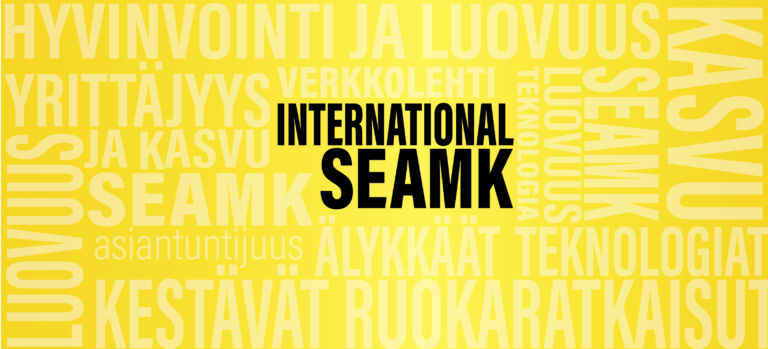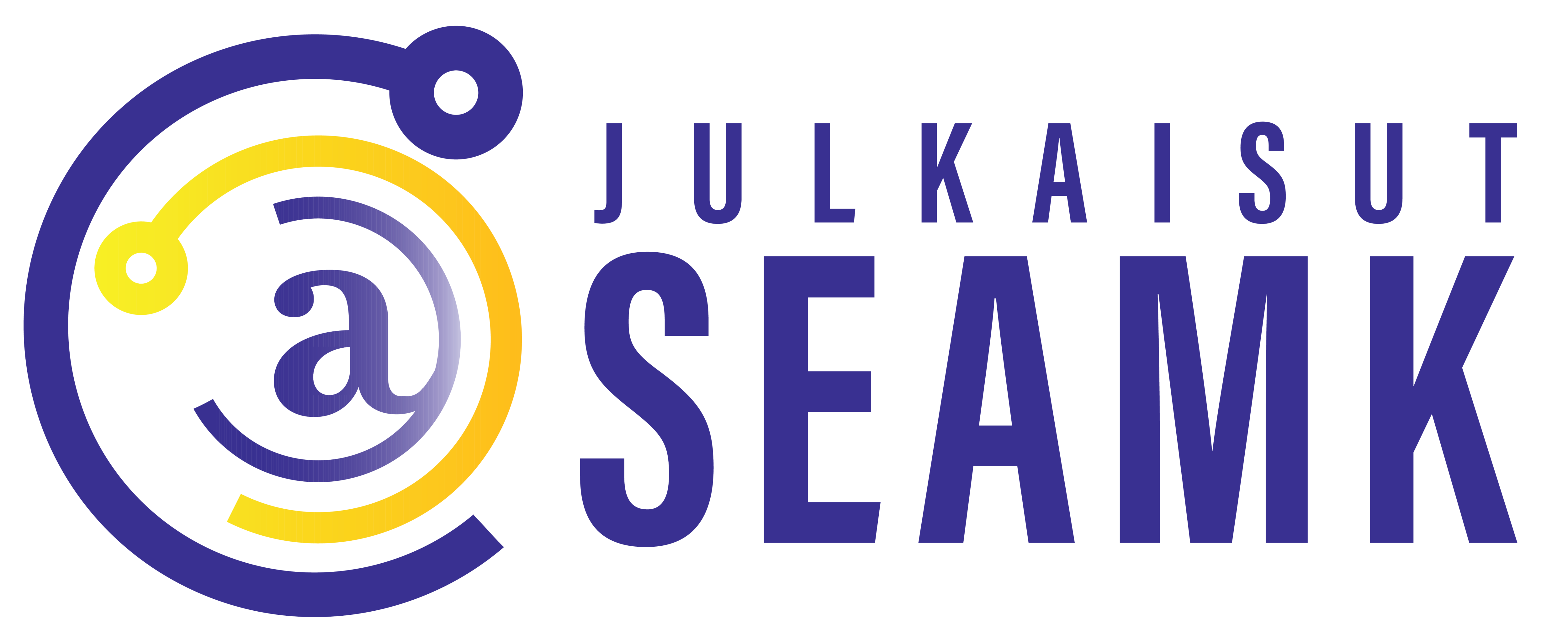The both sides of the immigration, social inclusion and settlement ecosystems

Artikkeli suomeksi Maahanmuuton ja kotoutumisen ekosysteemien molemmat puolet
This article complements Six areas for development in the immigration, social inclusion and settlement ecosystems series, providing an in-depth look at key areas essential for fostering a thriving ecosystem for immigration, inclusion and integration. It also explores practical strategies for enhancing both sides of the ecosystems (service providers and users) while aligning with broader societal goals.
Read more about the concepts from here: Ecosystem concepts in the context of immigration, social inclusion and settlement
Situation in South Ostrobothnia
The number of international individuals arriving in Seinäjoki for work and study, often with families, has significantly increased. Both new arrivals and the professionals assisting them need a clear understanding of the services available across the different stages of life. This enables targeted guidance and support services for various situations and ensures that agencies can seamlessly direct clients to the appropriate services.
The increased number of immigrants at different life stages reveals inconsistencies in guidance: immigrants sometimes receive differing instructions to support starting a life in here, participation and settlement. Various organisations lack sufficient knowledge of the services provided by others, making it challenging to direct people to the precise support they need. For instance, employers may struggle to guide international employees and their families to the right services, which often requires them to spend additional time personally assisting newcomers.
Currently, the clarity of service pathways for international talents and their families in the region seem to be sometimes inadequate, complicating service use and community participation. Regional cooperation is essential to holistically review, streamline, and unify service pathways that support settling in.
The Ecosystem Approach in social inclusion and settlement
The concept of an ecosystem is particularly fitting for this type of developmental work. “An ecosystem mindset, which emphasises interactions and synergies between various actors, offers a new framework to understand and enhance the integration process. By utilising this approach, we can mobilise the resources, expertise, and perspectives of different fields to support smooth integration into society (writer’s translation, original in Finnish)” (Mozaffari, 2024.)
However, the ecosystem nexus in which the individual must operate remains complex and often confusing. In other words, the network of services and interactions where inclusion and settlement happen is still unclear to both service providers and users.
An ecosystem is a broad network that encompasses actors from different sectors and supports the engagement and settlement of immigrants. From an ecosystem perspective, two sides can be examined: 1) how local actors and services are organized to support the initial processes of immigration (the immigration ecosystem) and 2) how these services function to aid inclusion for immigrants, enabling them to easily find and effectively utilize the services they need (the Social Inclusion and settlement ecosystem). The latter aspect, which focuses on the perspective of people, users, regarding the services, is equally important as the organization and collaboration among the actors.
On the other hand, service ecosystem needs to be visually and linguistically clear so both users and providers can understand its structure and effectively navigate towards the appropriate services. For example, a consistent set of instructions for immigrant families regarding children’s enrolment in school, early childhood education, or health services would be beneficial. Currently, different organisations have their own guidelines, and even Finnish-language information on municipal websites may lack clarity, with few resources directing users to an equivalent page in English.
On the other hand, the ecosystems always contain immaterial “services”, such as general safety, nature and social factors (Adams & Adger, 2013).
Progress in the Regional Ecosystem
The workshop organised by ELY (28.10.2024), “The Ecosystem and Functions of Immigration and Integration in South Ostrobothnia,” provided an overview and statistical insights into why our region depends on immigration —our success hinges largely on immigration (Kinossalo & Jousmäki, 2023). An equally important question raised in the workshop was how we approach immigration in a people-centric way in both immigration and labour market discussions.
I find the life-course perspective crucial, as each person is a whole individual whose life is influenced by social, physical, and mental environments. Viewing integration holistically is key to strengthening the ecosystem (Mozaffari, 2024). What kind of South Ostrobothnia immigrants encounter? How do we recognise and welcome newcomers as individuals?
Migration often brings significant life changes, impacting all aspects of an individual’s life, yet it is only a part of one’s identity (Kinossalo et al., 2020). A life-course (life-story related) perspective on integration and inclusion highlights how they span family, work, and leisure. This approach reminds us that integration involves more than learning a language or securing a job; it encompasses community belonging, social ties, and the creation of shared experiences. A sense of belonging improves language learning, which in turn supports societal participation. (Kinossalo et al., 2022.) Understanding these, the immaterial factors can better taken into account when structuring and developing the ecosystem (Adams & Adger, 2013).
Strengthening the Ecosystem with a Life-Course Approach
The life-course perspective sees social inclusion and settlement as processes that progresses in different ways at various life stages. For instance, one individual might simultaneously need services related to their roles as a parent, caregiver, or as they transition from studies to work. In this sense, any immigrant may require a range of multidisciplinary services, similar to anyone else. While as integration and employment support services are also essential.
By understanding people as whole individuals, we can better support them, their families, and their daily lives, which involve a blend of new and old customs, emotions, and relationships. Thinking of this as lifelong, life-storied and all-encompassing helps us realise that it is much more than formal processes like language learning or job placement (Kinossalo et al., 2022). An ecosystem that understands everyday life and its challenges offers a greater chance to feel like a valuable part of the community.
Summary
For the immigration ecosystem to succeed, both aspects (providers’ and users’) must be considered: close cooperation among service providers and clear, user-focused service pathways. This ensures that newcomers can easily find and utilise the services they need, and feel a sense of belonging in the community.
It is essential to establish a clear, accessible ecosystem that considers all life stages, where:
- People can find the services they need regardless of their initial point of contact.
- Collaboration among actors is tight, and roles are clearly defined to avoid conflicting information.
- Communication is consistent and accessible in at least Finnish and English, with website updates managed in partnership.
Points for Consideration
How and in which language do you find the right service for your current life situation? Are you able to locate necessary information on municipal or regional websites? Do you understand what an automated phone message says, probably in Finnish? Could you map the network of key services in your life and position yourself at a point from which you can easily navigate towards the services you need? What is important to your living environment?
Maiju Kinossalo
Expert, Researcher, International Education Services
SeAMK
Kinossalo works at SeAMK as an inclusion and integration specialist and is pursuing a doctoral dissertation in educational sciences. Her research focuses on narrative identity construction, practices that promote integration and inclusion, and the development of multilingual literacy. Kinossalo is a developer of projects promoting inclusion.
The ecosystem of service pathways, the other “side” of the ecosystem, has been studied within the SENSE network, where regional actors convene to discuss development ideas, tools, and actions. The SENSE (Sense of Belonging, Sense of Seinäjoki, and Sense of South Ostrobothnia) network aims to strengthen these connections across the region.
For further information: maiju.kinossalo@seamk.fi
References
Adams, H. & Adger, W. N. (2013). The contribution of ecosystem services to place utility as a determinant of migration decision-making. Environmental Research Letters, Volume 8, Number 1. Saatavilla: https://iopscience.iop.org/article/10.1088/1748-9326/8/1/015006/meta#erl444777s4
ELY. [South Ostrobothnia Centre for Economic Development, Transport and the Environment] Etelä-Pohjanmaan ELY-keskus. Etelä-Pohjanmaan maakunnallinen maahanmuuton ekosysteemi. Työpaja 28.10.2024.
Mozaffari, B. (2024). Maahanmuuttaneiden kotouttaminen ekosysteemin näkökulmasta. Saatavilla: https://www.linkedin.com/pulse/maahanmuuttaneiden-kotouttaminen-ekosysteemin-bahar-mozaffari-k8w6f/
Kinossalo, M., Jousmäki, H. & Hautamäki, T. (2020). Maahanmuuttajuus – vain pala identiteettiä. Saatavilla: https://lehti.seamk.fi/hyvinvointi-ja-luovuus/maahanmuuttajuus-vain-pala-identiteettia/
Kinossalo, M., Jousmäki, H., & Intke-Hernandez, M. (2022). Life-story pedagogy for identity: Through linguistic and cultural recognition to participation and equity. Apples – Journal of Applied Language Studies, 16(2), 99–119. https://doi.org/10.47862/apples.111953
Kinossalo, M., Jousmäki, H. 2023. Kansainvälisestä koulutuksesta Etelä-Pohjanmaan kasvuun – yhteistyön merkitys osaajien pitovoimakysymyksenä. Saatavilla: https://lehti.seamk.fi/verkkolehti/2023/kansainvalisesta-koulutuksesta-etela-pohjanmaan-kasvuun-yhteistyon-merkitys-osaajien-pitovoimakysymyksena/
